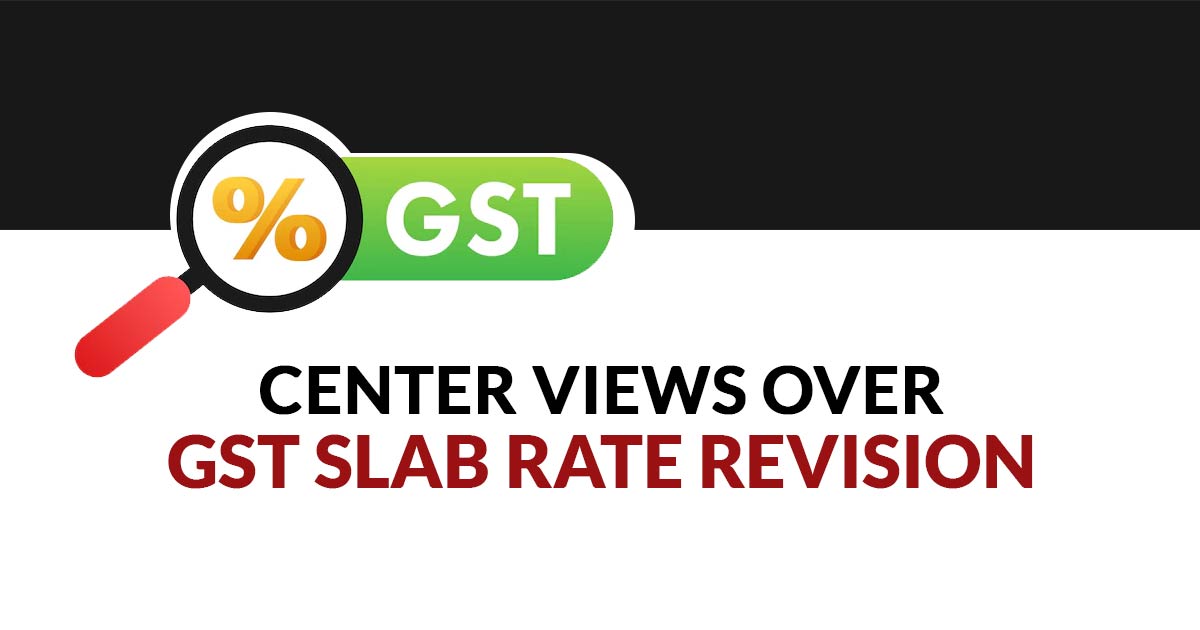
According to a senior official at the Centre, faced with the competing objectives of raising revenue and containing inflation, the government is likely to propose a gradual hike in the GST rates over time rather than reducing the slab sizes as they are at the moment.
The same would be told to the states, who know that there might be a possible drop in their tax revenues post to June when a 5-year revenue cover for them will stop to exist. The union’s road map for the rise in the GST rate will factor in the requirement to take the weighted average GST rate from a small over 11% at the present to the approximated revenue-neutral rate of 15-15.5% over a two-three year duration, however, it will not shock to the consumers through the manner of the straight rise in the rates.
The rise in the rates on the bigger consumption along with the needed items would be much more gradual. There are 4 major GST slabs 5%, 12%, 18% and 28%. Nearly 70% of the GST revenues arrived from 480 items which draw 18% GST.
The centre proposes to transfer the items beneath the 12% and 18% slabs to a new median slab of 15%. The 5% rate would be shifted via a new rate that stands at 6% or 7%, however, the rate change would be performed in a way that it would not exceed 4 slabs which are made at any duration. In a 3 slab structure, the lowest rate would be 6 to 7 per cent, 15% would be the median rate while the highest slab of 28% would not revise.
However, the recommendation by the group of ministers (GoM) which is led by the Karnataka Chief minister Basavaraj Bommai on the GST rate rationalisation would seem to be ready by the finish of April. The GST official might acknowledge these proposals in the 3rd week of May.
The officials specified that “The 12% and 18% rates will collapse into one rate, say 15% or 16%. There will be a lower rate and a higher rate (28%) besides the median rate,”.
An increase in the 5% GST rate, which engages sensitive products like food and medicines is required to be done gradually. Also when 18% gets dropped to 15% then there would be a big loss in the revenue.
The administrative mentioned that “One way to do this is to increase 12% slightly in the first phase and simultaneously reduce 18% before coming to the new median rate over two-three years,.”
Tax rates are poses a lot of differences which makes lots of confusion. The ministerial panel would indeed find out if there is a scope to transfer some of the items from 18% to 28% slab.
Kerala Finance minister KN Balagopal, a member of the GoM, said that “We have identified 25 items, including refrigerators, where benefits of GST rate reductions have not been passed on to consumers by the companies. These rate cuts could now be reversed.”
In December 2018, the GST official has reduced the tax rates on the bigger items along with that the consumer durables, electronic goods and furniture items, from 28% to 18%. It comprises some televisions, water coolers, ice cream freezers, milk coolers, food grinders, paints, digital cameras, sports requisites, etc. In November 2017, the prices of chocolates, as well as the food preparations which consist of the cocoa, gets diminished from 28 to 18 per cent.
The administration has tried to revise the inverted duty structures across several value chains, but the decision to start the constant GST rate for the textiles proved that the same will not be a simpler choice. The official need to drop the plan to raise the GST rates towards the most textile products in the man-made fibre value chain from 5% to 12% by the end of Dec 2021 between the protest via industry from Gujarat and the other states. The same might think about the same problem.









